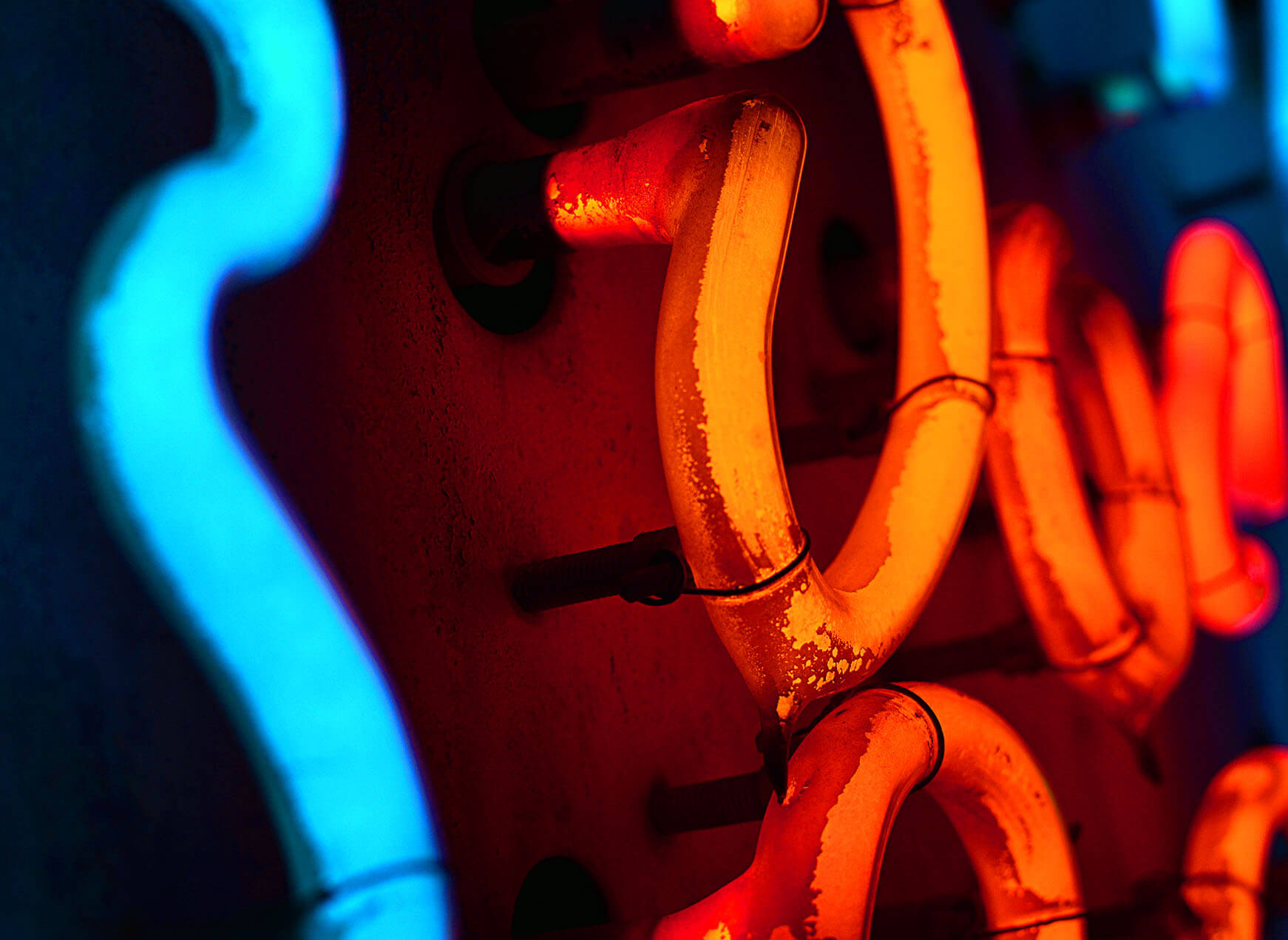Neon signs have been around for roughly a hundred years. The technology first saw use for signage in Paris in the 1910s and expanded rapidly from there to other parts of the world, beginning in particular with the United States. Today, neon signs are found in cities and towns everywhere, and they are often used as a form of advertising or decorative lighting.
Vivid neon signs have stood the test of time as a popular choice for businesses looking to grab the attention of passersby. But have you ever wondered what is in neon lights, or how a neon sign works? Here’s a quick rundown of the science behind these dazzling displays.
The accidental origins of neon signs
First, it’s important to understand that neon is a chemical element that is naturally found in the air we breathe. Its existence was discovered in in 1898 by two British chemists, Sir William Ramsay and Morris Travers. While experimenting with liquid air, they noticed that when they separated out the different gases that make up air, one of the gases produced a reddish-orange light when an electric current was passed through it.
When the electric current flows through the neon gas, it causes the atoms to become excited and release photons, which are tiny particles of light. Neon is a noble gas, which means it is non-reactive and does not easily form compounds with other elements. Ramsay and Travers named the newly discovered gas ‘neon,’ which comes from the Greek word ‘neos,’ meaning ‘new.’
At the time, the production of liquid air was a relatively new process. It involved cooling air until it became a liquid, at which point the different gases that make up air could be separated using a process called fractional distillation. This allowed scientists and industrialists to produce large quantities of pure gases, such as oxygen, nitrogen, and argon, which could be used for a variety of purposes. This process was developed in the late 1800s as a way to produce large quantities of pure gases for industrial and scientific purposes. So neon signs came about as a by-product of the liquid air business.
How neon signs are made
To create a neon sign, a craftsman will bend a piece of glass into the desired shapes. Then, after electrodes are attached to the ends of the tube, all the air in the tube is pumped out, and neon gas is injected. These electrodes are connected to a high-voltage transformer, which is responsible for supplying the electric current that will make the neon gas glow.
Different colours can be achieved by using different gases. In addition to the classic reddish glow of pure neon gas, another frequently used gas is argon, which produces a blue light.
As well as using different gases to create different colours in a neon sign, a sign maker can also coat the inside of the glass tube with different materials. This is typically done using a process called “sputtering,” where a material is applied to the inside of the tube using a high-voltage electrical current.
The material used for the coating will determine the colour of the light produced by the neon sign. For example, coating the inside of the tube with phosphors will produce a yellowish-green glow, while coating it with other materials, such as metals or metallic salts, can produce a wide range of different colours.
Coating the inside of the tube with different materials can also add other effects to the neon’s appearance. For example, using reflective coatings can make the sign appear brighter, while using diffusive coatings can create a softer, more diffuse light. By using a combination of different gases and coatings, a sign maker can create highly complex and detailed neon signs that are both beautiful and eye-catching.
One of the things that makes neon signs so durable is the fact that they don’t have any moving parts. This means that they can last for many years with minimal maintenance.
Neon signs have been known to last for many decades, with several around the world claiming the title of ‘world’s oldest continuously lit neon’. Neon signs have a long and rich cultural history, but like many other things, they were essentially invented by accident.
Seamless design and implementation of your next signage fit-out
Want some custom neon across your destination sites? We’ve got you covered. SignManager are independent branding project management experts. So much of customer experience in a retail setting revolves around branding and signage.
We tailor custom fit out solutions for your national organisation’s commercial and cultural needs. We also work closely with clients to roll out successful and future-proofed safety signage campaigns. We’re brand professionals, and our client testimonials say it all. Get in touch with our friendly team today for an obligation-free chat.





